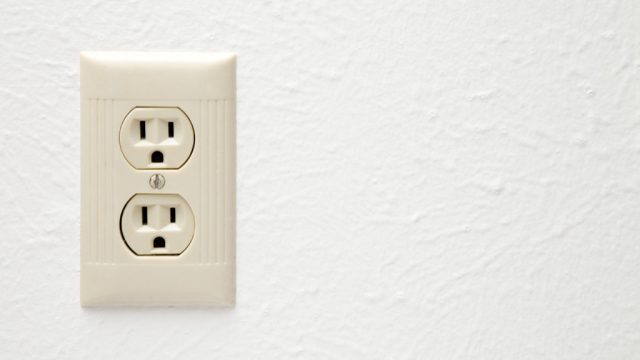The Secret Reason Why Outlets Have Three Prongs

From when you get out your blow-dryer in the morning to when you go to charge your phone at night, odds are you’re plugging something into an outlet ten or fifteen times a day. However, you probably don’t pay much mind to the purpose of the three holes you’re plugging that device into.
If you look at an outlet, you’ll notice three distinct components: two vertical slits and a round hole slightly below or above their midpoint. So, what’s the purpose of these three distinct parts of a plug?
The smaller vertical slit in an outlet is known as the “hot” side, into which electricity flows into the plug. The larger vertical slit is the neutral side, which acts as the pathway by which the electricity from the hot side returns. In the case of an alternating current (AC) system, the direction in which the electricity enters the plug changes periodically.
You might be asking yourself why there’s a third section on a three prong outlet if the current already has a pathway along which to travel, thanks to the two existing plugs. This is where the ground prong comes in. The ground prong—the part of your plug that goes into the round hole in your outlet—is primarily there for your safety. The ground prong delivers excess electricity that might have escaped the circuit, like in the case of a loose or uninsulated wire, to the ground.
“A three prong outlet has a centerpiece that connects it to the direct ground,” explains Frank Thompson, an electrician with New York City Electricians. “The ground is the neutral wire that prevents a spike in the circuit or some kind of overload. It prevents your electrical unit from being burned. If there’s a spark, it will hit the breaker right away.”
If, for instance, a wire came loose in your metal-encased appliance and touched its exterior, the device would become electrified. If you were to then touch the appliance’s exterior, the electricity could then flow into you, shocking or potentially killing you. However, the ground wire ensures that any errant electrical charges are being sent to ground, a non-conductive destination where they won’t cause harm. “If you have a ground, you won’t have a static shock, and it keeps you from getting electrocuted, since your body is a conductor,” says Frank.
And while it’s usually easy to tell the hot and neutral sides of an outlet from one another based on size alone, if you’re not sure, there’s a foolproof trick to figure it out, according to Thompson. If you’re rewiring an outlet, the colors of the screws on the outlet will tell you which is which. “You can always tell by the screws: the gold is the hot one, the silver is the neutral,” says Thompson.
To discover more amazing secrets about living your best life, click here to follow us on Instagram!